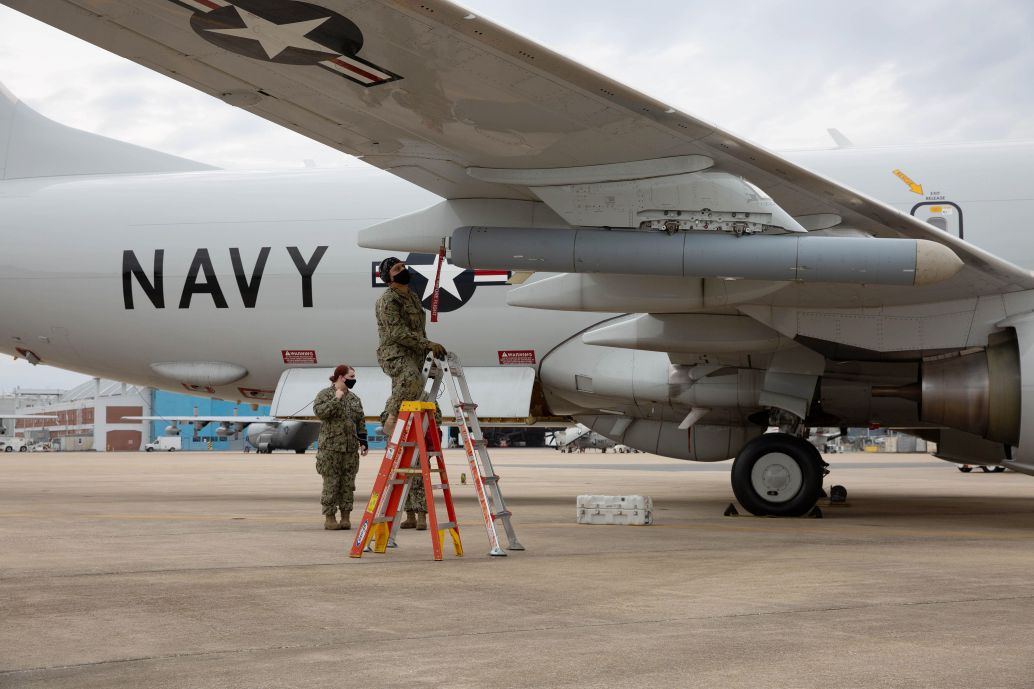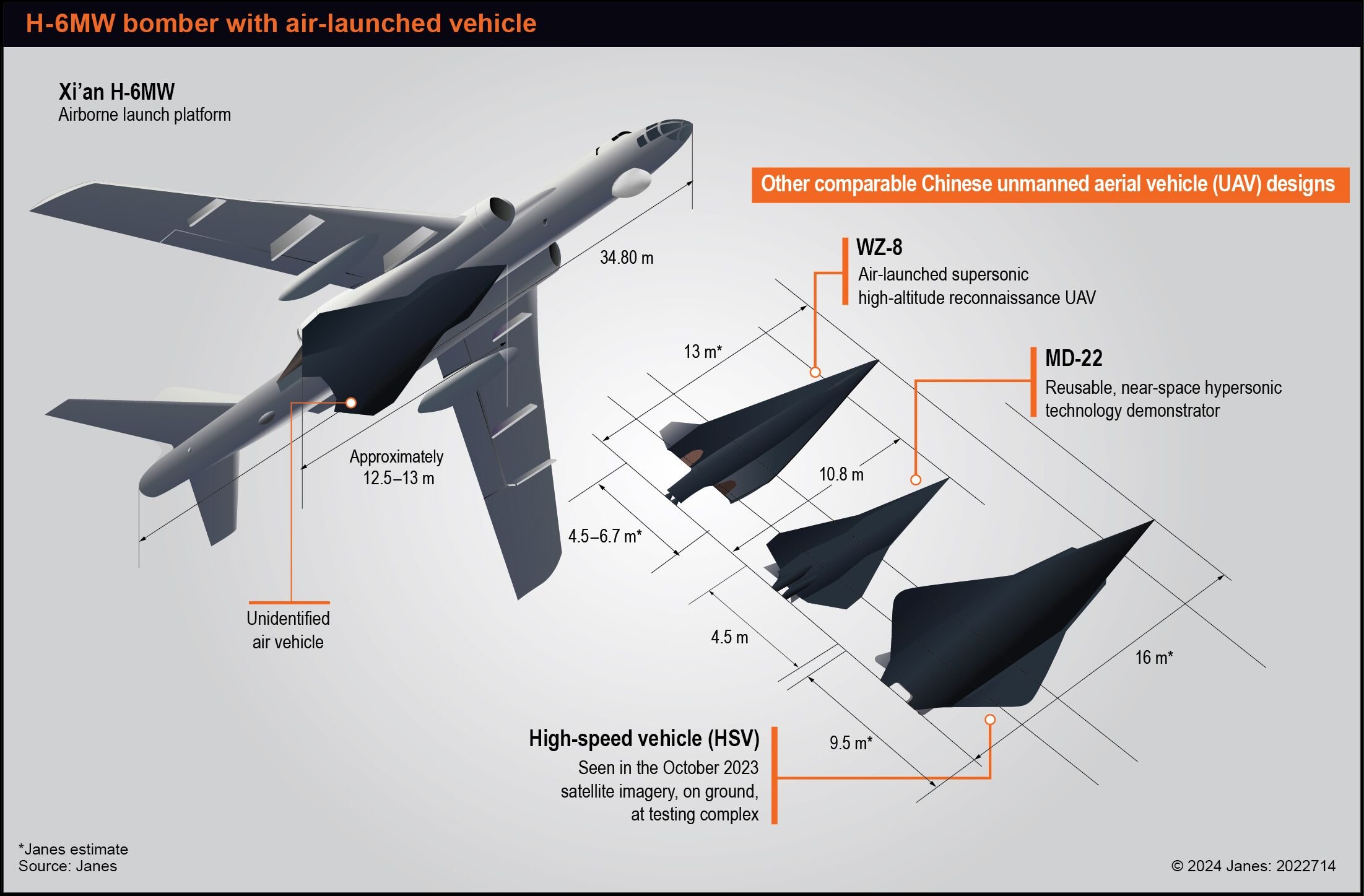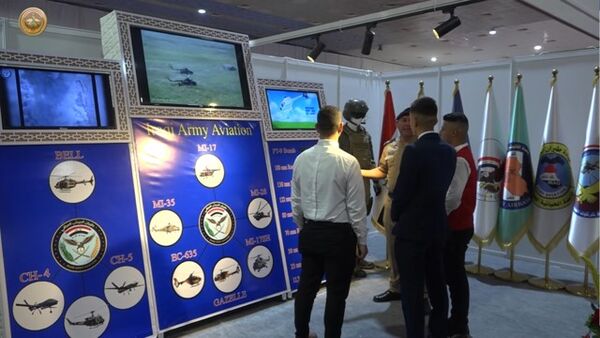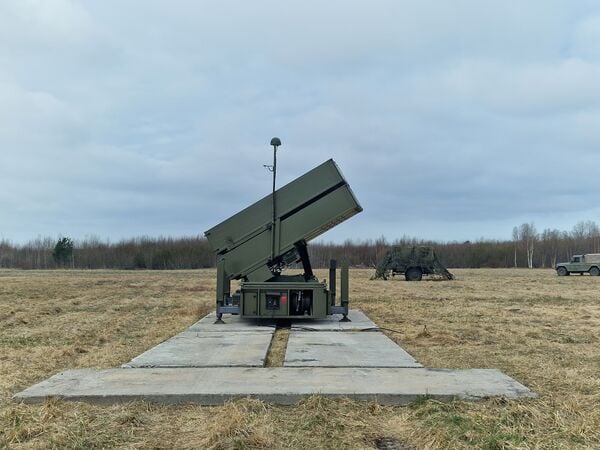- About
- Intara
- Capabilities
- Advisory
- Resources
- News
- Store
US Navy starts RFCM pod trials from P-8A Poseidon
12 April 2021
by Richard Scott
The US Navy (USN) has begun flight testing a new pod-mounted radio frequency countermeasure (RFCM) prototype developed for the P-8A Poseidon maritime patrol aircraft.

A member of the Air Test and Evaluation Squadron (VX) 20 puts a pod-mounted radio frequency countermeasure system on a P-8A Poseidon. (US Navy)
A first airworthiness flight was completed by the Air Test and Evaluation Squadron 20 (VX 20) on 12 March at the Naval Air Warfare Center Aircraft Division (NAWCAD) Atlantic Test Ranges. The pod has subsequently undertaken further testing at the Naval Air Weapons Station China Lake in California.
The new RFCM decoy, which integrates BAE Systems' existing AN/ALE-55 Fibre Optic Towed Decoy (FOTD) within an underwing pod, has been developed in response to a requirement raised by the Naval Air Systems Command's (NAVAIR's) Maritime Patrol and Reconnaissance Aircraft Program Office (PMA-290) to improve P-8A platform self-protection against RF-guided surface-to-air missile threats. While the P-8A is already equipped with the Northrop Grumman AN/AAQ-24 Large Aircraft Infrared Countermeasures System for protection against infrared threats, it has no active protection against radar-guided threats.
New aerial vehicle seen on Chinese H-6 bomber
24 April 2024
by Akhil Kadidal


This conceptualised graphic of a new air-launched vehicle recently carried by a Xi'an H-6MW bomber is based on a low-quality photograph. The new air vehicle is possibly based on the design and development of other Chinese air vehicles such as the WZ-8 and MD-22, and a new HSV. (Janes)
A Chinese Xi'an Aircraft Company (XAC) H-6MW bomber has been photographed in flight while carrying a new type of air-launched vehicle.
The H-6MW is a specialised, cruise missile-carrying variant of the People's Liberation Army Air Force's (PLAAF's) strategic bomber. Janes has previously assessed that the aircraft is the airborne launch platform for the Aviation Industry Corporation of China (AVIC) WZ-8 supersonic, high-altitude reconnaissance unmanned aerial vehicle (UAV).
However, the new aerial vehicle seen carried by the bomber differs in design from the WZ-8, suggesting it could be part of a new programme to develop a supersonic or hypersonic air vehicle. A photograph of the H-6MW carrying the new aerial vehicle first appeared on Chinese social media from the third week of April. The programme is likely inspired by the WZ-8 programme.
Iraqi Army Aviation Command identifies itself as CH-5 UAV operator
24 April 2024
by Jeremy Binnie


A still from a video released on 21 April shows the Iraqi Army Aviation Command stand at IQDEX in Baghdad. (Iraqi Ministry of Defence)
Iraqi Army Aviation Command (IAAC) has confirmed it has ordered, if not already received, Chinese-made CH-5 unmanned aerial vehicles (UAVs).
The command's stand at the International Defense Exhibition in Iraq (IQDEX) held in Baghdad from 20 to 23 April was decorated with posters that showed all the aircraft it has in service, which included the CH-5 next to the CH-4 UAV operated by its 100 Squadron.
Earlier reports that Iraq had acquired CH-5s were based on a photograph that circulated on social media in September 2023 showing a man holding a certificate in front of a projected image that identified the event as the “closing ceremony for CH-5 training” above Iraqi and Chinese flags.
A second photograph purportedly of the certificate showed it was for the successful completion of the CH-5 theoretical, practical, and flight training courses. While the graduate's name was obscured, it had stamps from the Iraqi military attaché office in China as well as the Chinese companies Poly Technologies and CH UAV Science and Technology Company.
Spain upgrades and acquires more NASAMS systems
24 April 2024
by Nicholas Fiorenza


A Spanish NASAMS anti-air defence unit (UDAA) has been deployed in Estonia since April 2023. (GBAD Task Force Estonia)
The Spanish government has announced the EUR410 million (USD438 million) modernisation and acquisition of additional National Advanced Surface-to-Air Missile Systems (NASAMSs), Kongsberg announced in a press release on 19 April.
The Dirección General de Armamento y Material (DGAM), the Spanish Armaments Directorate, approved a contract for the modernisation of Spain's NASAMS on 19 April. Kongsberg expected the contract to be signed in May 2024.
The NASAMS modernisation includes upgrading the system's Sentinel radar, Spain's Council of Ministers announced on 9 April. The EUR45.9 million contract includes additional equipment, technical support, and auxiliary tools and equipment necessary for integration into the system, as well as related training and maintenance.
The 655 AIM-120C-8 Advanced Medium-Range Air-to-Air Missiles (AMRAAMs) that the US Congress announced would be provided to Spain in early December 2023 include NASAMS missiles.
Spain was the first export customer for NASAMS, which it has operated for over 20 years.
The US Navy (USN) has begun flight testing a new pod-mounted radio frequency countermeasure (RFCM) p...
Latest Podcasts
Iran Israel analysis
In this podcast Janes analysts discuss the Iranian attacks on Israel on the 14 April. They highlight the military systems used by Iran and the performance and impact of these on Israel. They also discuss the implications of this attack goi...
Listen nowJanes Case Studies
Using Janes Intara to build a common intelligence picture: Russian build up on the Ukrainian border
View Case StudyNews Categories
 C4ISR Details
C4ISR Details